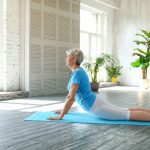
Time spent sitting, reclining or lying down during the day could increase a person’s risk of heart disease and death, a new study warns. More than 10 and a half hours of sedentary behavior is significantly linked with future heart failure and heart-related death, even among people who are getting the recommended amount of exercise, researchers report. “Our findings support cutting back on sedentary time to reduce cardiovascular risk, with 10.6 hours a day marking a potentially key threshold tied to higher heart failure and cardiovascular mortality,” said co-senior researcher Dr. Shaan Khurshid, a cardiologist at Massachusetts General Hospital in Boston. “Too much sitting or lying down can be harmful for heart health, even for those who are active.” These results jibe with another study published recently in the journal PLOS One, which found that the aging of people’s hearts hastened as they spent more time sitting. This occurred even if people met minimum daily exercise recommendations. For the new study, researchers analyzed data on nearly 90,000 people participating in the U.K. Biobank ongoing research project. The average sedentary time per day was 9.4 hours for the participants. After an average follow-up of eight years, about 5% developed an irregular heartbeat, 2% developed heart failure, just under 2% suffered a heart attack and about 1% died of heart-related disease, researchers found. Sedentary behavior steadily increased… read on > read on >






































